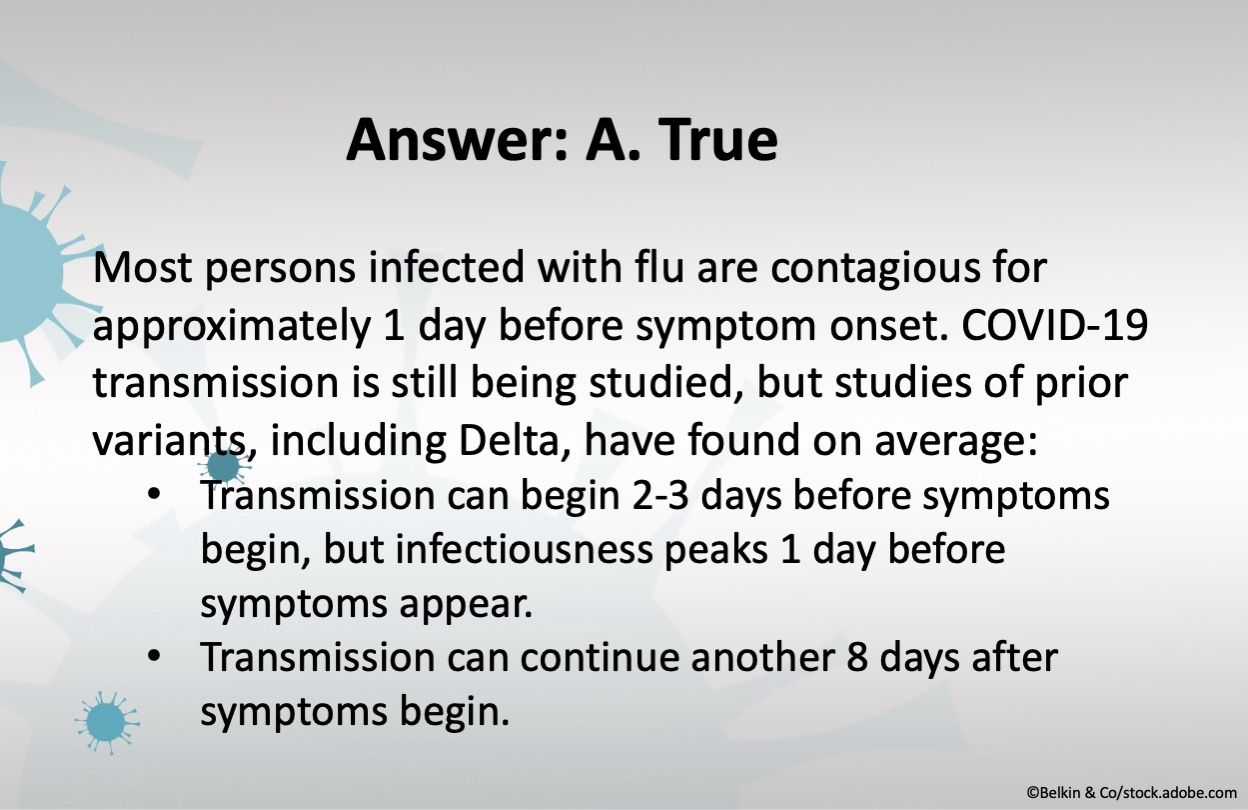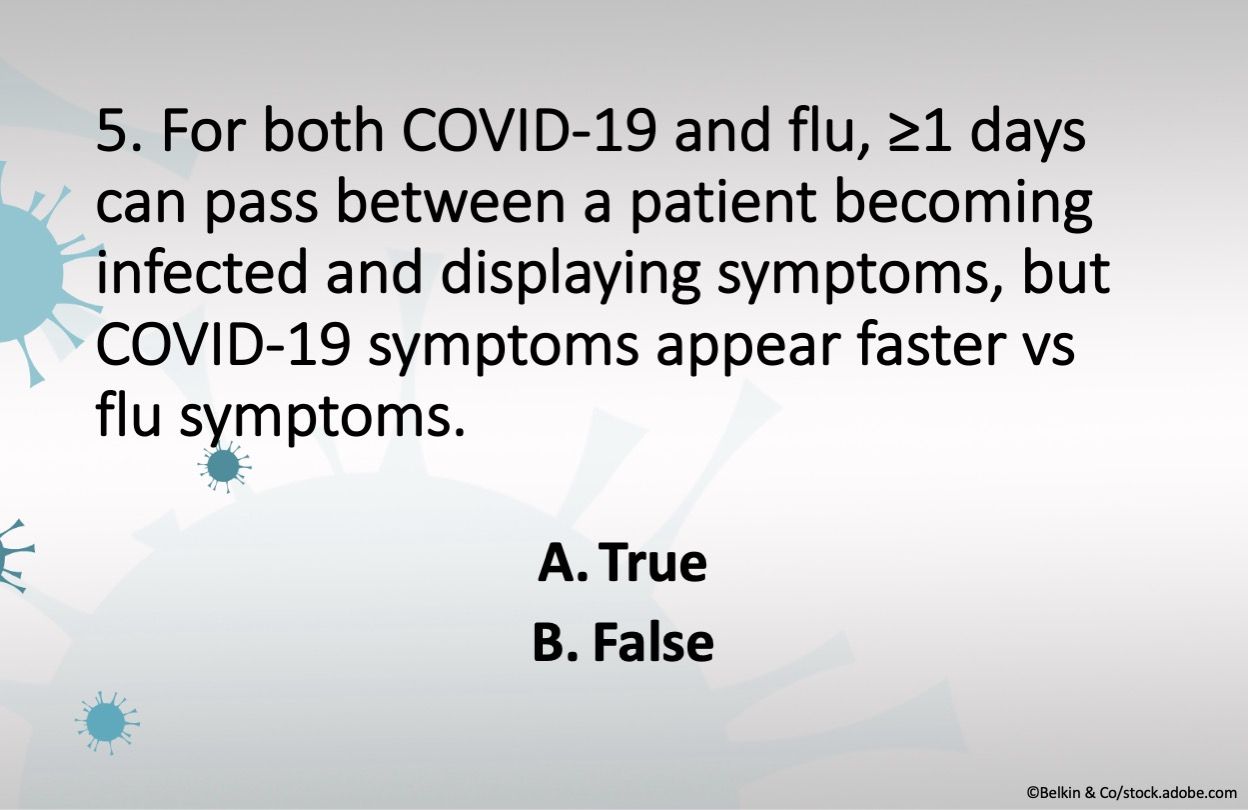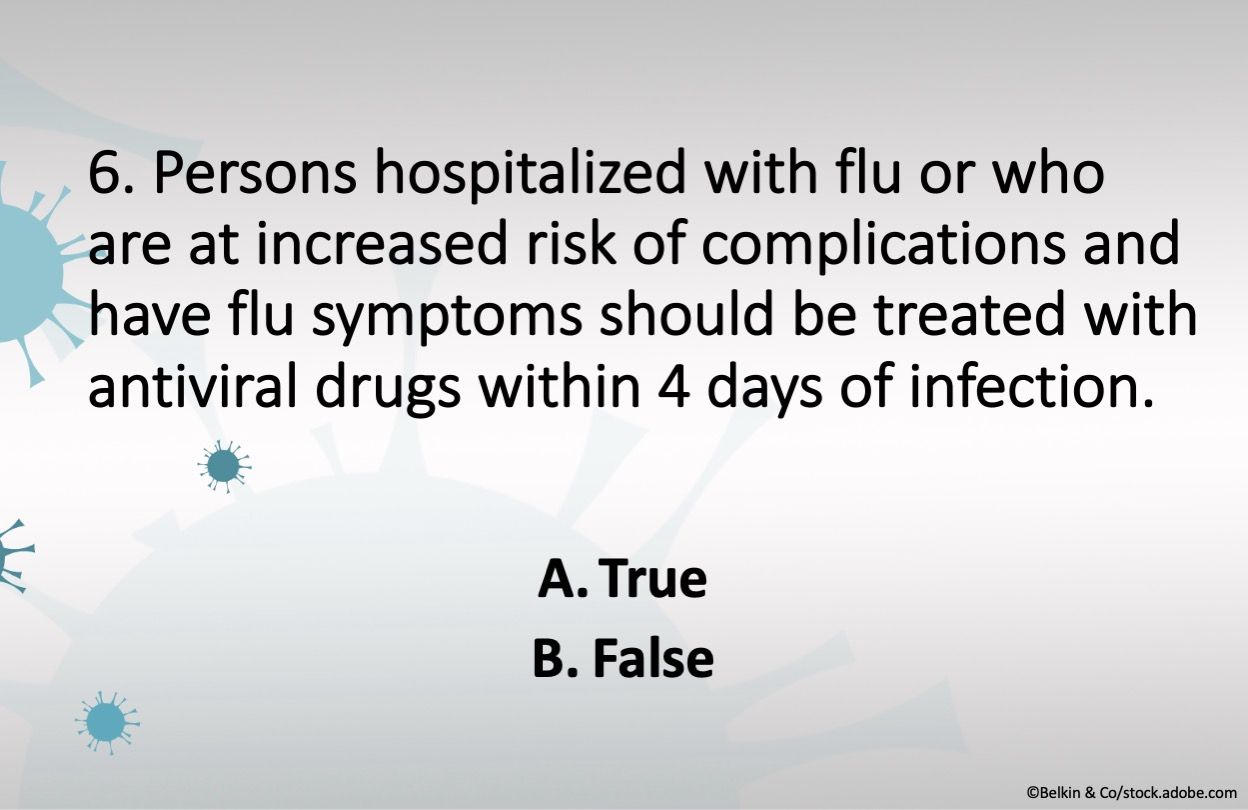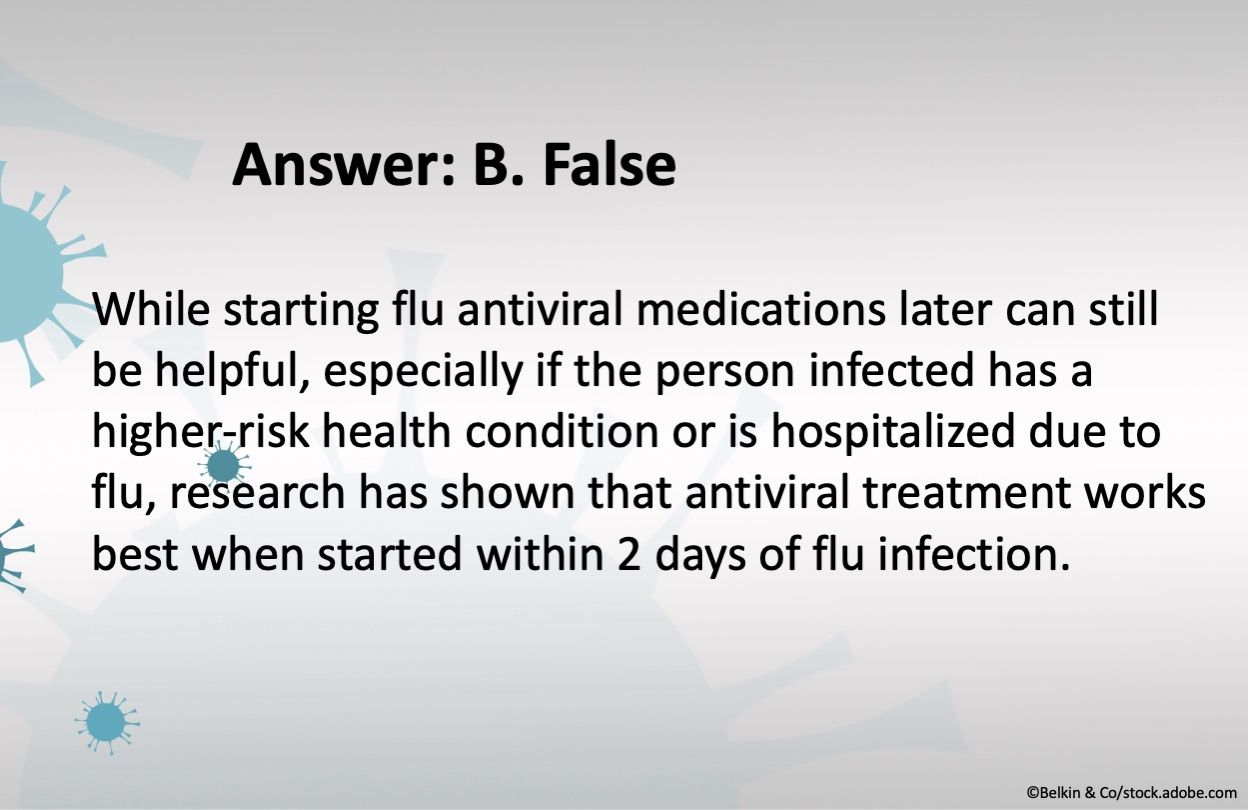© 2025 MJH Life Sciences™ , Patient Care Online – Primary Care News and Clinical Resources. All rights reserved.
COVID-19 vs Influenza: 7 Questions on What Makes Them Different
COVID-19 and influenza are similar and different in various ways, and differentating between the two is critical as the pandemic's second year is underway. Patient Care Online previously published a quiz on this topic based on the US Centers for Disease Control and Prevention's (CDC) page comparing COVID-19 and flu. With new research on COVID-19 being published almost daily, the CDC recently updated its page to include the latest information on transmission, complications, vaccines, and more. Take the 7-question quiz below to see what you've learned since last year.

Question 1. A patient presents with a cough, sore throat, fatigue, and loss of taste. These symptoms are most likely caused by COVID-19 or influenza?

Answer: A. COVID-19. Cough, sore throat, and fatigue are symptoms that can be caused by either COVID-19 or flu, however, patients infected with COVID-19 are more likely to present with change in or loss of taste or smell.

Question 2. True or false? COVID-19 and flu viruses spread in similar ways, but transmission via “superspreading” events has been observed more frequently with COVID-19 during the pandemic.

Answer: A. True. Both COVID-19 and flu are transmitted from person-to-person who are within 6 feet of each other, mainly by respiratory droplets made when infected persons cough, sneeze, or talk. Compared to flu, however, COVID-19 has been observed to be associated with more superspreading events vs flu and SARS-CoV-2 is more contagious than flu viruses.

Question 3. Complications resulting from both COVID-19 and flu include all the above except which one?

Answer: C. Blood clots. Both COVID-19 and flu can result in pneumonia, respiratory failure, sepsis, and cardiac injury, among others. Blood clots in the veins and arteries of the lungs, heart, legs, or brain as well as multisystem inflammatory syndrome in children and in adults are additional complications associated with COVID-19.

Question 4. True or false? Persons infected with COVID-19 or flu can spread the virus for at least 1 day before experiencing symptoms, but COVID-19-infected persons could be contagious for a longer time than those infected with flu.

Answer: A. True. Most persons infected with flu are contagious for approximately 1 day before symptom onset. COVID-19 transmission is still being studied, but studies of prior variants, including Delta, have found on average:
- Transmission can begin 2-3 days before symptoms begin, but infectiousness peaks 1 day before symptoms appear.
- Transmission can continue another 8 days after symptoms begin.

Question 5. True or false? For both COVID-19 and flu, ≥1 days can pass between a patient becoming infected and displaying symptoms, but COVID-19 symptoms appear faster vs flu symptoms.

Answer: B. False. For both COVID-19 and flu, patients may develop symptoms ≥1 days after infection. However, flu symptoms can develop 1-4 days after infection and COVID-19 symptoms can appear as early as 2 days after infection or as late as 14 days after infection.

Question 6. True or false? Persons hospitalized with flu or who are at increased risk of complications and have flu symptoms should be treated with antiviral drugs within 4 days of infection.

Answer: B. False. While starting flu antiviral medications later can still be helpful, especially if the person infected has a higher-risk health condition or is hospitalized due to flu, research has shown that antiviral treatment works best when started within 2 days of flu infection.

Question 7. Which of the above vaccines currently authorized or approved in the US for COVID-19 prevention are preferred for primary and booster vaccination?

Answer: D. A and B. According to the CDC, the Pfizer-BioNTech and Moderna COVID-19 mRNA vaccines are preferred over the J&J COVID-19 vaccine for primary and booster vaccination. However, the J&J COVID-19 vaccine may be considered in some situations, such as persons who want to get it despite the safety concerns or had a severe reaction after receiving an mRNA vaccine dose.




